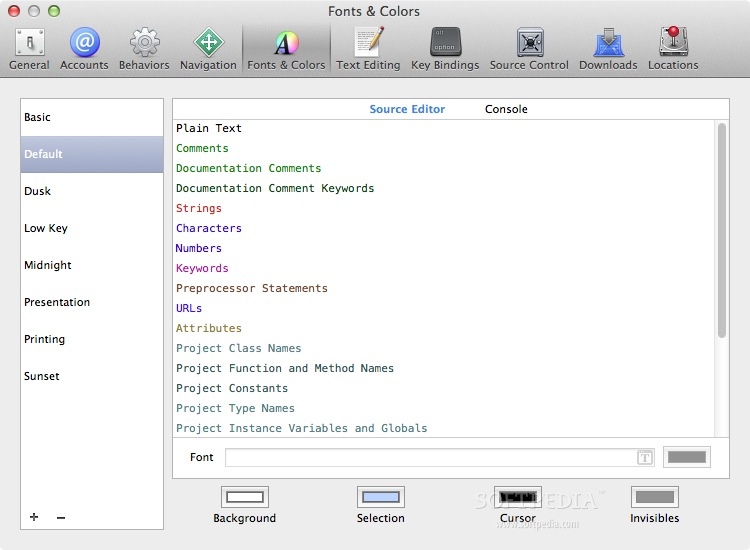

In order to develop Apple apps, you’ll need a Mac computer running the latest version of macOS. Users can also recognize your app as the original version. This way, Apple can identify you as the original author of your app.

The signing tool is in the provisioning portal, which allows you to sign your code. Then cross your fingers as you wait for the app to go live on the App Store once it satisfies the reviewers. It also allows you to upload the build bundle from Xcode directly.ĭone listing your app? Submit it from the portal directly and wait for review. You’ll need to provide basic information about the app, such as name, screenshots, and description. With App Store Connect, you can seamlessly publish and manage your apps on the App Store. This is a great way to get feedback on your app before releasing it to the general public. TestFlight is a valuable tool for developers that allows you to distribute test versions of your app to a limited number of users. Each SDK includes a number of system APIs and frameworks that you can use to build your app’s UI and functionality, and interact with OS features. The Apple SDKs are sets of tools and APIs that you can use to develop apps for iOS, macOS, and tvOS. SwiftUI also includes a number of built-in components, such as buttons, labels, and text fields, that you can use in your app’s UI. With SwiftUI, you can quickly and easily create complex interfaces without having to worry about the underlying code. It also helps you connect your UI to your app’s functional code. SwiftUI is a user interface framework that makes coding UIs a breeze. The best part about Swift? It allows you to employ the same tools and frameworks to create apps for a variety of platforms, such as iOS, tvOS, iPadOS, macOS, and watchOS. If you’re new to coding, Swift is a great place to start. It’s a powerful and fast programming language that is easy to learn. Swift is a programming language created by Apple.
#MACINTOSH XCODE SIMULATOR#
The Xcode simulator is also a great way to test your app’s responsiveness to different screen sizes and orientations.
#MACINTOSH XCODE INSTALL#
The simulator is a great way to test your app’s UI and functionality without having to install it on a physical device. The Xcode Device Simulator allows you to test your app on a variety of different devices – whether you’re building an iPhone app or something for the iPad, Apple Watch, and Apple TV. Xcode includes everything you need to create amazing apps, including a rich set of tools for designing user interfaces, building your app, and testing your code. With the Xcode IDE (Integrated Development Environment), you’ll be able to develop apps for iPhone, iPad, Mac, Apple Watch, and Apple TV. Of course, an Apple-powered computer like MacBook or iPad should be your first tool of work. In order to develop macOS and iOS apps, you’ll need to understand a few key components.įamiliarize yourself with the tools that will help you craft your first app. Of course that only gets you as far as ObjC, not Swift, and I don't know if Apple is going to OpenSource it.Components of the Apple Developer Ecosystem Originally designed for NextStep and then OpenStep compatibility, I've heard they are now more-or-less Cocoa compatible, but I've not played with any of it in almost 2 decades. OS X changed Display Postscript to Display PDF, and increased the general hardware requirements 1000 fold (NeXT could run in 8-16MB, now you need GB).ĭue to the close marriage of GCC and Objective C and NeXT, your best bet at running XCode natively under Linux would be to do a port (if you can get ahold of the source - good luck) utilizing the GNUStep libraries. sort of like an X Server, but with postscript commands. The rest of the OS involved ObjectiveC (under arrangements between Stepstone and Richard Stallman of GNU/GCC) with a GUI based on a technology called "Display Postscript". It may be BSD compatible in the programming API, but it is NOT BSD. It was originally designed as a MicroKernel, but due to performance constraints, they eventually decided they needed to include the Unix portion of the API into the kernel itself and so a BSD-compatible "server" (originally intended to process requests for BSD-compatible kernel messages) was moved into the kernel, making it a Monolithic kernel. The NeXTStep OS utilizes the Mach kernel developed by CMU. But just to be precise, OSX is not based on BSD, it is an evolution of NeXTStep.


 0 kommentar(er)
0 kommentar(er)
